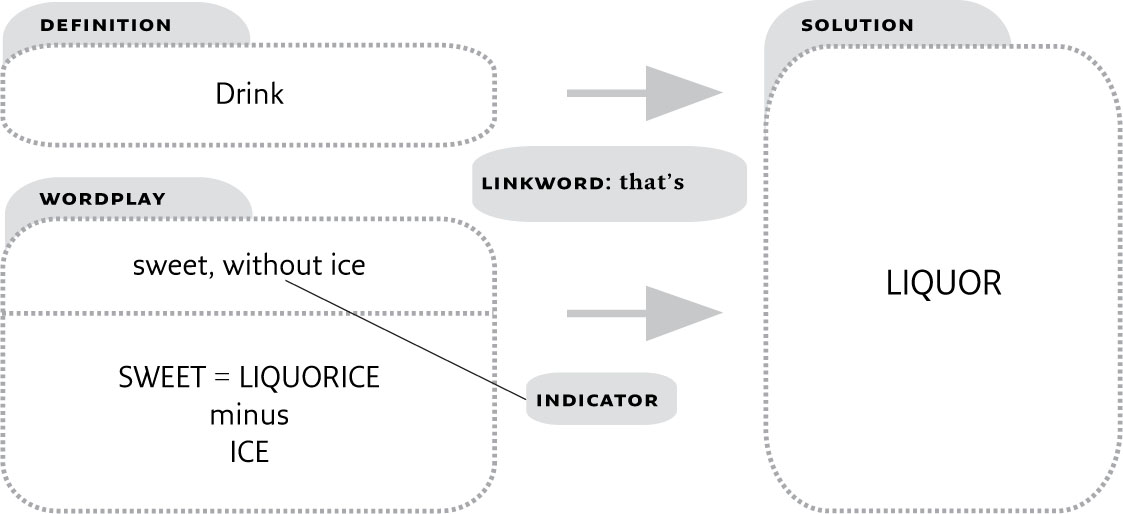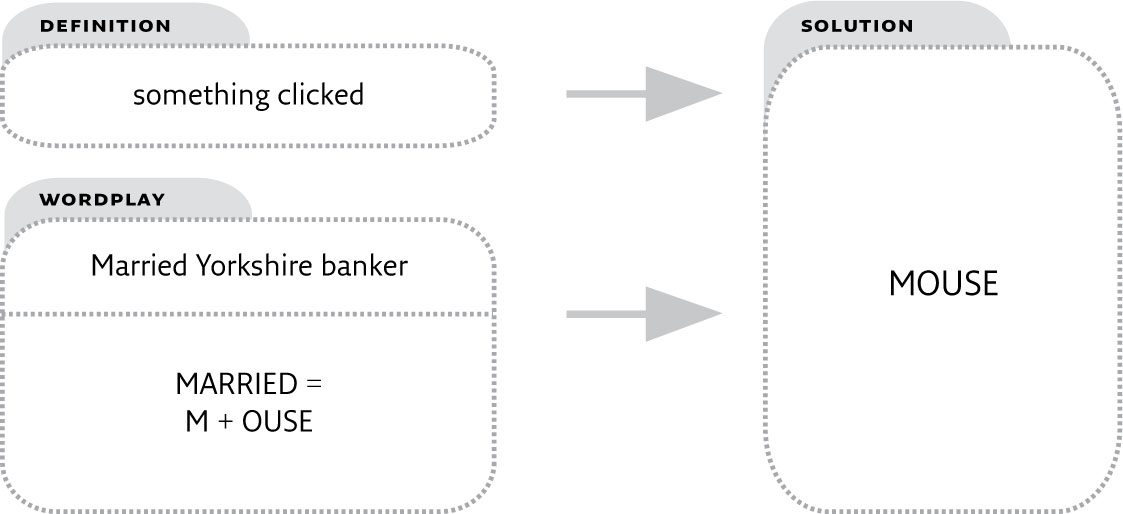
10. Ten Especially Troublesome Words
“My agent rings, she says: ‘I’m stuck on the crossword. The clue’s “Overloaded postman”.’ I pause a moment: ‘How many letters?’ ‘Hundreds.’”
Jeremy Paxman, Spectator diary
Either because they have multiple uses, or because they are a well-established convention but not immediately obvious, there are a few particularly awkward words which it’s good to know about. The first two, about and in, are especially difficult for newcomers.
1. About
One of the most misleading words in crosswords is about because it has so many uses:
You’d be forgiven for thinking this is a sandwich clue, but it isn’t:
ANAGRAM CLUE: Wrote about tall building (5)

Likewise the innocent little multi-purpose word in causes trouble. Each of these next clues uses in differently. First, as a hidden indicator:
HIDDEN CLUE: Happy perhaps, in battlefield warfare (5)

Second, as a linkword between definition and wordplay:
ADDITIVE CLUE: Be prolific in area before spring (6)

LETTERS TO THE TIMES
Sir, Your reporting staff deserve a medal for enduring the rabble that took place in the House of Commons yesterday… I turned the TV off and got on with the crosswords.
Third, as a sandwich indicator:
SANDWICH CLUE: Clearly aren’t in use (10)

Fourth (though rarely), as a definition:
SANDWICH CLUE: In goal, blocking attempt (6)

Fifth (equally rarely), as a definition in another language:
CRYPTIC DEFINITION: This is in French (2,7)

Sixth, as part of the definition:
HOMOPHONE CLUE: One in bed reciting numbers of sheep (5)

Seventh, as part of the wordplay:
ADDITIVE CLUE: Monarch in clothes, striking (9)

The first, second and third of these usages are by far the most common.
3. Without
This can be an indication that something must be taken away, as below:
TAKEAWAY CLUE: Drink that’s sweet, without ice (6)

In some puzzles, without is also still used in the sense of outside (marked as archaic in most dictionaries). It is therefore a sandwich indicator, as follows:
SANDWICH CLUE: Gardens without nitrogen can be recognized (4)

4. One
The word one can be a wordplay substitute for I, ace, a, an and un (from the dialect usage ’un).
In cryptics, men do demonstrate an ability to multi-task:
6. Words ending in -er
In the sometimes artificial world of crosswords, we can encounter nouns with unexpected, sometimes unnatural, not to say groan-worthy, meanings that are implied rather than actually specified in dictionaries.
Here are some examples:

So a banker may live in, say, Switzerland but also on the banks of a river, as follows:
ADDITIVE CLUE: Married Yorkshire banker – something clicked (5)

Of can very occasionally be a linking word between the definition and wordplay. Its meaning in this case is stretched (arguably too far) to from or constituted by as here in this example:
ANAGRAM CLUE: Developed new part of Belgian city (7)

8 & 9. Right and left
Right and left appear in a number of guises. Right can be an anagram indicator (= verb, to correct); the letter r as an abbreviation; and synonyms such as ok and lien. Left can be a takeaway indicator; the abbreviation l; and synonyms such as over and port.
10. Say
As well as its most common usage as a synonym for for example or e.g., the word say can indicate a homophone, as in the first clue below, or it can be a simple synonym, as in the second:
HOMOPHONE CLUE: Shrub or trees, say (5)

ALL-IN-ONE ADDITIVE CLUE: One to produce key, say (6)

TOP TIP – KEY NOTES
The word key (as in the previous clue) and its sister, note, can have a lot of forms in their various musical guises. As regards phonetic notes, they are these: do, doh, re, mi, me, fa, so, soh, la, lah, te, ti; or they can be single letters: a, b, c, d, e, f, g. Despite this unwanted luxury of choice, you should normally find that clues with any of these references leave you in no doubt which note is required.
11. To
By now you know that clues do not contain words without any purpose. A common exception is inclusion of the word to before verbs. I’m unsure why so let’s call it a long-standing convention. Here’s an example in which the first to is superfluous but the second is fair since it forms part of the build-up:
ADDITIVE CLUE: Official has to fix period to run in the cooler (12)

Sir, it is always a joy for me when England play Test cricket. Pictures on the back page allow me more uncluttered white areas to do my anagrams.
Henry Pottle